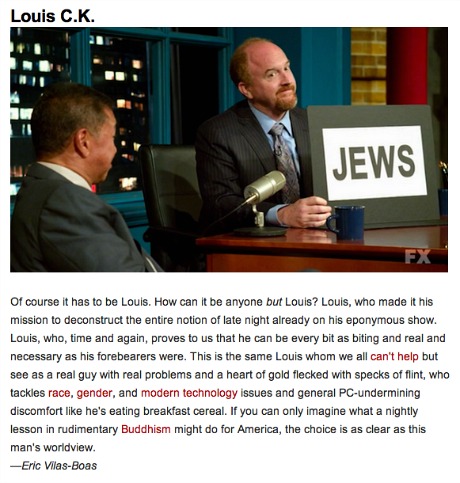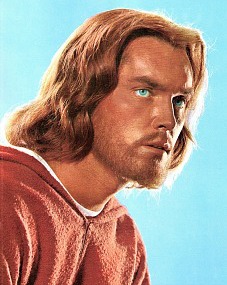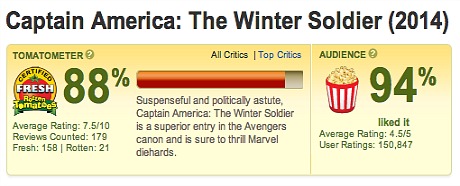The Other Woman (20th Century Fox, 4.25.14) is a comedy about three women (Leslie Mann, Cameron Diaz, Kate Upton) taking revenge upon a hot-shot businessman three-timer (Nikolaj Coster-Waldau) who’s been involved with and cheating on them all. So it’s a kind of female payback comedy a la Nine to Five (i.e., aimed at women) but it’s also trying to appeal to horndogs with Upton’s white-bikini carnality. The movie was produced by Julie Yorn, wife of A-list entertainment attorney Kevin Yorn and also his partner in their production company, LBI Entertainment. On 2.18.14, Heavy.com‘s Paul Farrell reported an “anonymous source” allegation, tweeted by Whisper.com’s Neetzan Zimmerman, that Yorn (brother of Hollywood agent Rick Yorn and singer/songwriter Pete Yorn) was having an affair with Gwynneth Paltrow. Maybe bullshit, maybe not. (On top of which Paltrow and her husband Chris Martin are in some kind of open arrangement.) If the Yorn-Paltrow thing is true, this would at least add a level of intrigue to an otherwise rote-seeming formula comedy.
Man Up, Try It Again
I had a mostly unpleasant experience with Jonathan Glazer‘s Under The Skin during last September’s Toronto Film Festival. My negative reaction was a minority view against the current 85% Rotten Tomatoes rating. I’ll allow that festival fatigue factor can sometimes get in the way; perhaps I should see it again fresh today. Jonathan Glazer‘s film earned a “robust” $140,000 in four L.A. and NYC theaters this weekend. Maybe, but “robust” is not what this film is when you watch it. Not for me, at least.
Shoulda Been There
A couple of years ago I stole from Esquire by writing my own “What I’ve Learned” essay. There’s a new issue with a long piece called “84 Things A Man Should Do Before He Dies,” so here’s another ripoff: “Theatrical Movie Experiences You Should Have Before You Entirely Succumb to VOD.” Here are four indelible movie-watching recollections — three from the late ’70s, one from ’95. The concept or suggestion is that a devoted Movie Catholic should try to experience something similar in his/her lifetime.
(1) Catch An Exciting New Film In A First-Rate, Big-City Theatre On Opening Day, and In So Doing Experience Something You’ve Never Felt Or Sensed Before. The first time this happened in my 20s (teenage or tweener experiences are too impressionable) was on the afternoon of 11.6.77 at the Zeigfeld theatre — opening day for Steven Spielberg‘s Close Encounters of the Third Kind. I’d waited in the ticket line for an hour or so in the brisk November air. I was actually knocked out several times by that film (this was more than 20 years before my Spielberg hate would begin to manifest), but the first chest-pounder happened during the opening credits. White titles on black, dead silence. And then more credits and then just a faint hint of alien-like syntho-hum on the soundtrack. As the credits ended the choral hum slowly got louder and louder, and then CRASH! An orchestral crescendo perfectly synched with the the first images of the storm-blown Sonoran desert. We can’t go home again but somehow or some way, each and every movie lover has to experience something like this. A theatrical high, couldn’t stop talking about it, saw CETK producer Michael Phillips standing in the back of the theatre and talked a him a bit.
Seconding Louis C.K.
Some Esquire guys have suggested a few David Letterman replacements. Every since the announcement I’ve been thinking either Patton Oswalt, Louis C.K. or Ellen DeGeneres. Before his recent Spirit Awards emcee gig I would have recommended Oswalt but he might be a little too brilliant (i.e., original-thinking, challenging) for a late-night crowd. Not that Louis C.K. isn’t just as brainy as Oswalt, but his humor is wrapped in an oafish blue-collar package. He’ll never be truly uptown. I think he’d actually be perfect…seriously. Ellen would be a pretty good fit (I spoke to her at a party once and realized then and there she’s very fast on her feet), but she seems a bit too…easy-going? A little too daytime in her attitude and worldview?

Little Black-Robed Mermaid
Three days ago, or on Wednesday, 4.2, the John Roberts-led Supreme Court decided by the usual 5-to-4 margin to eliminate limits on aggregate campaign contributions in the case known as McCutcheon v. FEC. “Many people watching the case had called it the sequel to Citizens United,” the Washington Post‘s Jamie Fuller wrote the following day. “However, it’s more like the latest, inevitable film of an unending franchise. McCutcheon v. FEC is probably more like the Saw IV of campaign finance, at least as far as reformers are concerned. For those who agree with the Supreme Court’s latest decisions, McCutcheon v. FEC is probably more like the latest Land Before Time movie — returning us back to a land with founding fathers and without election filings and regulation.”
Renewals, Good Grooves
Ryan Murphy‘s adaptation of Larry Kramer‘s The Normal Heart (HBO, 5.25) looks pretty good. Possibly more than that. Perhaps it’ll turn out to the best gay-themed, era-capturing drama since Tony Kushner‘s Angels in America, also an HBO presentation. (Or not.) Brad Pitt producing, Julia Roberts costarring, Roberts’ husband Danny Moder handling the cinematography, etc. Two observations: (1) Mark Ruffalo‘s lead performance (i.e., “Ned Weeks” a.k.a. Kramer) might be the meatiest role he’s had since Zodiac and perhaps the most emotionally affecting one he’s played since You Can Count On Me…maybe; (2) Taylor Kitsch‘s career seemed doomed after his 2012 trifecta of calamity (John Carter, Battleship, Savages) but he performed honorably in Lone Survivor and now he’s got a strong supporting role in The Normal Heart. The WME agent who put Kitsch into Carter/Battleship/Savages came close to literally killing the poor guy.
Five-Minute Vacations
I’m no authority on webcams but Skyline webcams seem a bit more than a cut above. They’re almost thrilling. Clear, fluid, real-time video of schlumpy, sandal-wearing tourists walking around and snapping photos and throwing slices of half-eaten pizza in garbage cans. Dusk has been falling for the last hour or so (it’s now 8:35 pm over there) with the street lights glowing brighter and brighter. Mostly Central and Eastern Europe (no cams in the British Isles, France, Germany, Switzerland or Russia, not to mention Asia, Australia, South America or the U.S.) with a special focus on Italy. Webcam technology is obviously leaps and bounds beyond where it was 10 or even 5 years ago. Sklyine’s cameras are only planted in the usual tourist spots and the Italian Skyline guys are using the wrong lenses, resulting in a horizontal taffy-pull effect. Here’s (a) the town square in Perugia, (b) Rome’s Piazza Navona and (c) Trevi fountain.

Writing Assignment
Please respond clearly and concisely to the following hypothetical: You’re living in a Movie Godz police state and have just been told by a high governmental official that you and/or your children will never be permitted to see Disney’s Maleficient (5.30). Not in a theatre, not on Bluray, not streaming, not in an airplane…you will never see this movie during the remainder of your time on this planet. Please explain how your life will be in any way lessened or diminished. You have 30 minutes to complete this essay. When the buzzer rings, I want you all to put your pencils down — no exceptions. Bonus question: Which current or past films should be added to the no-see list?
“Just As Sentimental As The Next Fella”
I could watch this Last Picture Show clip every day for the rest of my life. When’s the last time a 21st Century film stopped the narrative and did an extra-slow dolly into a close-up of a character delivering a quiet little soliloquy? This one begins when Ben Johnson says “20 years ago”; the cue for the dolly-back is “I bet she’s still got that silver dollar.”
Ida Again
“This is one superbly composed, austere, Robert Bresson– or Carl Dreyer-like art film — set in 1962 and shot in black-and-white with a 1.37 aspect ratio. It’s about nuns, vows, cigarettes, fate, family skeletons, sex and sexy saxophones, Nazis and Jews and the grim atmosphere of Communist Poland. And it’s anchored by two understated knockout performances — one by the quietly mesmerizing, ginger-haired Agata Trzebuchowska as a young almost-nun named Anna, the other by Agata Kulesza as Anna’s aunt — the morose, blunt-spoken, hard-drinking, somewhat promiscuous Wanda.
Jesus of America
Diogo Morgado, the guy who played Jesus of Nazareth in Son of God (as well as in the History Channel mini-series The Bible), is from Portgual, but he basically looks American….like a nice big friendly professional football player or a juice-slurping, doobie-toking hippie farmer from Oregon or Washington. This is how conservative Christians, the audience for Son of God, like to think of their savior — as an ESPN anchor with a beard and cloak. The same syndrome prevailed in Nicholas Ray‘s King of Kings, of course, in which Jesus was played by the all-American, honey-haired, square-jawed Jeffrey Hunter with the freakish ice-blue eyes. That was in 1961, of course, when average Americans were even more caught up in self-reflecting mythology than today’s Christians. For what it’s worth I always presumed Hunter was chosen because of his peepers, which were meant to be perceived as a metaphor for inner divinity. My favorite Jesus is still The Last Temptation of Christ‘s Willem Dafoe, closely followed by The Gospel According to St. Matthew‘s Enrique Irazoqui.


(l.) Son of God star Diogo Morgado as Jesus of Nazareth; (r.) King of Kings star Jeffrey Hunter.
Goes Without Saying
I really like Captain America: The Winter Soldier and so do most of the Rotten Tomato guys — 88%. It’s obviously going to make a huge pile of dough this weekend. But some crab-heads are going “yeah, I guess, sort of but actually naaahhh, not really.” Rope of Silicon‘s Brad Brevet says it’s “just another Marvel movie,” etc. I’ve been picking up on this elsewhere. First, this is bullshit — I know when a movie works so don’t tell me. Second, there seems to be a pattern whenever I like a comic-book or straight action flick. If it delivers the basic elements with low-key intelligence and economy and a semblance of complexity, the geeks say “Hey, why isn’t it geekier? What’s with all the intelligence and economy? Why isn’t it whooshier and more whoo-hoo?” I despise Marvel comic-book movies. For hate’s sake, I spit my last breath on The Avengers and screw any future Thor and Spider-Man flicks while you’re at it. But I come around for Winter Soldier and there’s a contingent saying “don’t make these movies for guys like Wells…who gives a shit what he likes? This is our genre! Make these movies for us or we’ll talk shit about them on comment threads.” Reviews are hereby requested by any and all viewers.


